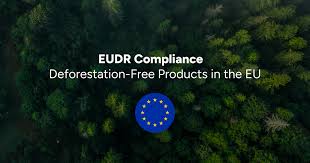
On Thursday, May 22, 2025, the European Commission published its classification of countries under the EU Regulation of Deforestation-free products (EUDR). The EUDR was formally adopted in May 2023 with the intended goal of guaranteeing that the products EU citizens consume do not contribute to deforestation or forest degradation worldwide.
The EUDR applies to products placed on the market from December 2024 by medium or big businesses and from June 2025 by small businesses. The Regulation itself applies to a specific set of commodities: palm oil, cattle, soy, coffee, cocoa, timber and rubber, as well as derived products such as beef, furniture, and chocolate.
Now the EU has published its classification of countries under the Regulation. Not surprisingly, all EU member countries are considered “low risk.” Other low risk countries include Canada, China, Saudi Arabia, Switzerland, the UK, the US, Vietnam and many others.
The Commission listed Belarus, North Korea, Myanmar and Russia as high-risk countries. Brazil, Indonesia, Malaysia and other countries were labeled as “standard risk.” The list of countries will be monitored, regularly reviewed, and updated as necessary.
Countries with a low-risk classification will be granted simplified due diligence. Standard and high-risk countries will have further obligations, including risk assessments and risk mitigation.
The classification, however, is not without its critics. The sheer number of low-risk countries arguably takes the bite out of the Regulation. If virtually everyone is low-risk what is the point of the Regulation?
Well, perhaps the point all along was not penalizing the low-risk countries, but rather ensuring the additional effort required for standard risk and high-risk countries was incentive enough to push them toward compliance with the Regulation.
What does the data say?
Based on 2024 trade data, Brazil was Europe’s main source for imported market pulp. Excluding pulp, China, the US, Indonesia, Canada, Russia, Brazil, Korea and India make up almost 90% of total paper and board imports.
Of these countries, only Russia is classified as high-risk, and both Brazil and Indonesia are classified as standard-risk. So the incentive for these three countries to comply with the Regulation to maintain their levels of import is quite high.
Another criticism is the broad brush with which the Regulation paints all commodities. Commodities in the EUDR are evaluated as a whole. That means individual industries or companies with a good track record can be penalized by another. If one commodity (say, cattle, wood, cocoa, soy, palm oil, coffee, or rubber) has deforestation issues, then all the other commodities form that country are also affected. One offending commodity could unilaterally label a country as high-risk.
In a controversial move intended to ease the implementation of the Regulation, the Commission approved a simplification package whereby companies can submit a single due diligence statement annually instead of for every shipment. However, the flaw in this system is clear. If you can submit a due diligence statement prior to harvesting, how can you guarantee that the harvest will be conducted using best practices before the fact?
Germany is also adding to the overall uncertainty. On May 5, a new German coalition government formed. One of the stated goals of the new government is to ensure the EUDR does not apply to Germany, by introducing a zero-risk alternative to the Regulation. This move would require changing the Regulation entirely, as the Regulation never contemplated a zero- or no-risk scenario. Arguably, re-opening the Regulation to re-negotiation puts the entire EUDR in jeopardy.
So is there no such thing as no-risk? It depends who you ask. According to the Commission there is no such thing. Germany thinks otherwise. Only time will tell whether the new German coalition government can successfully create a no-risk carveout in the Regulation, whether the EUDR can survive another round of negotiation, and if so, which countries will ultimately find themselves on the no-risk list.
– John Briner
